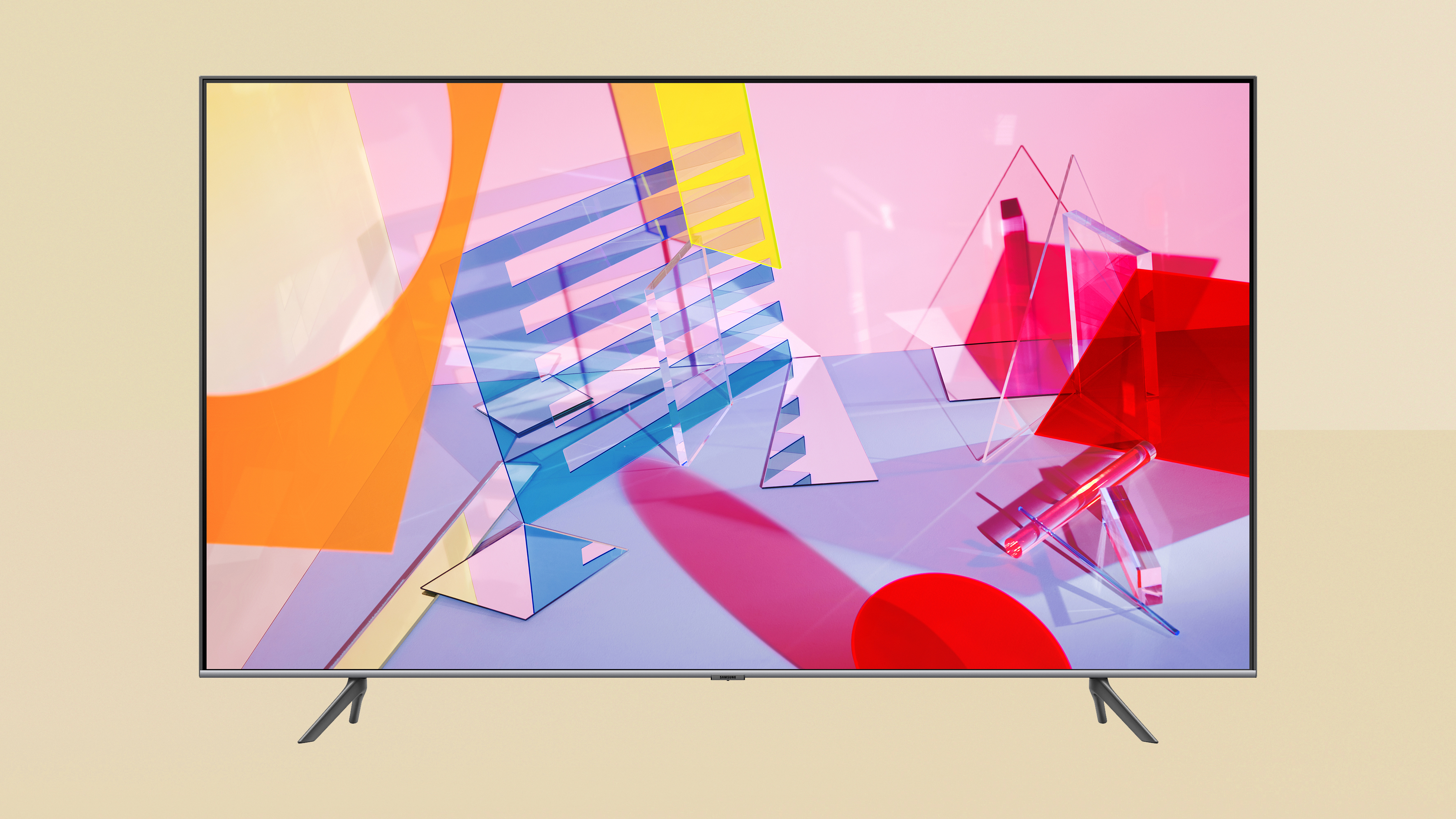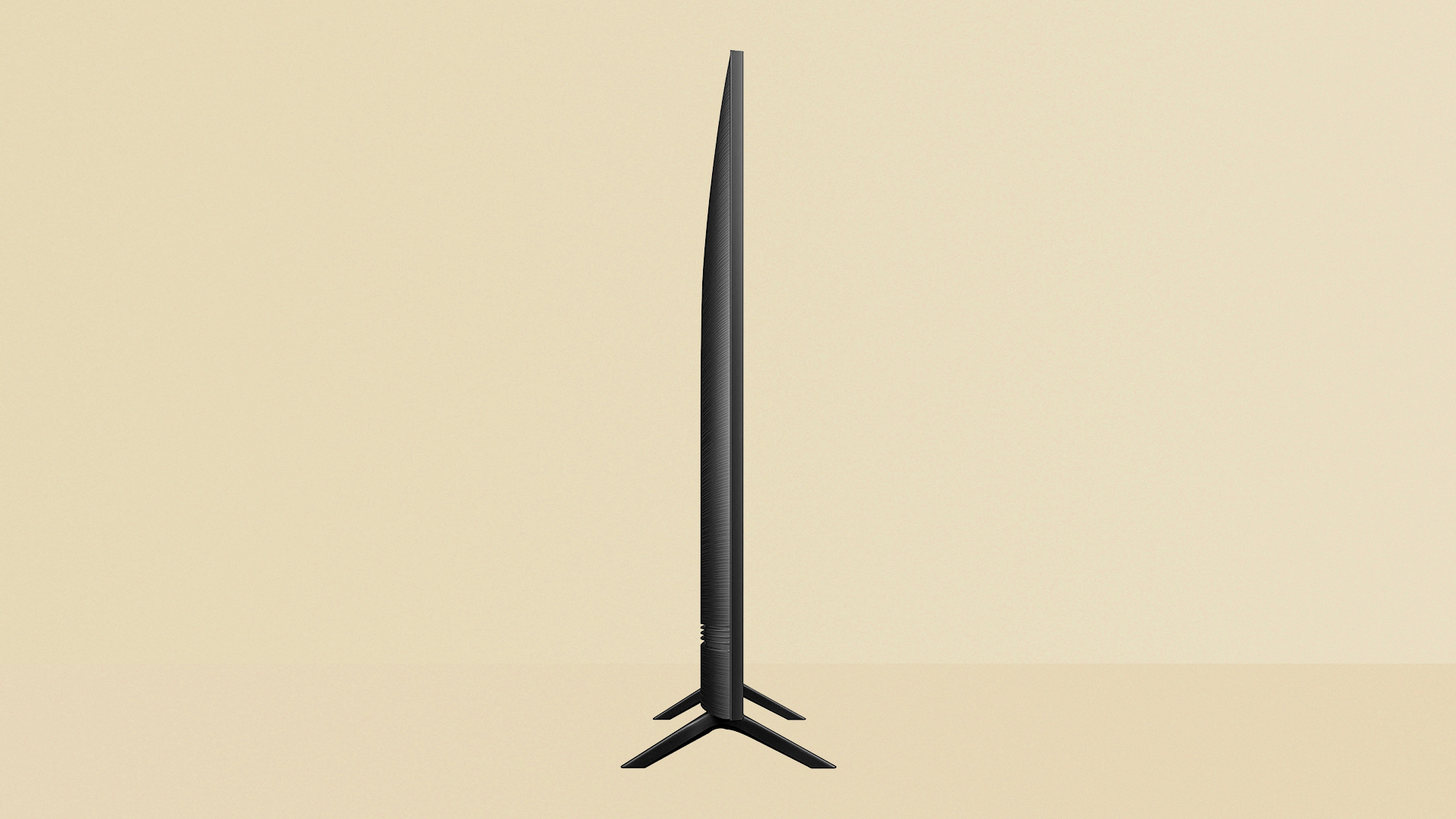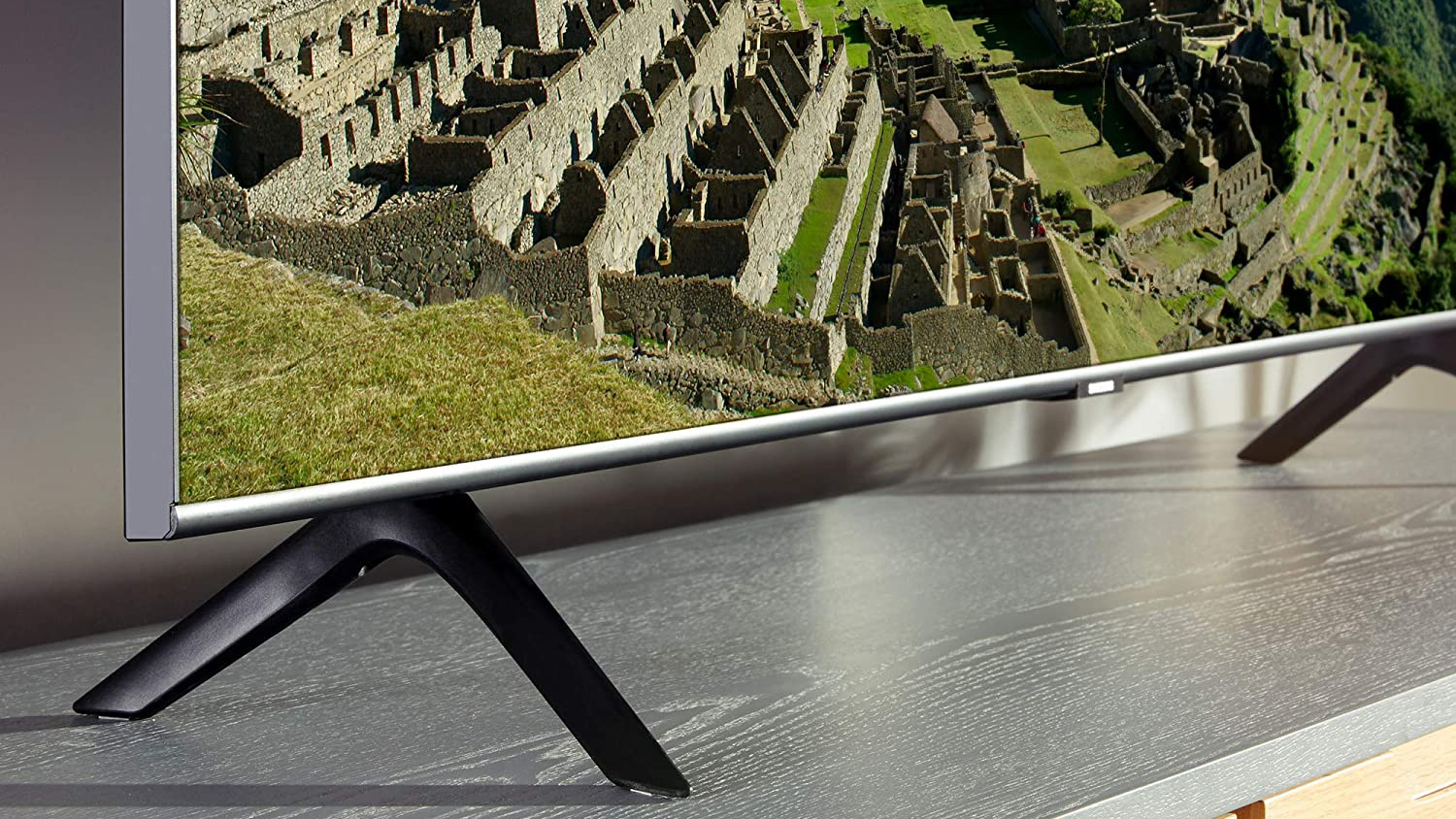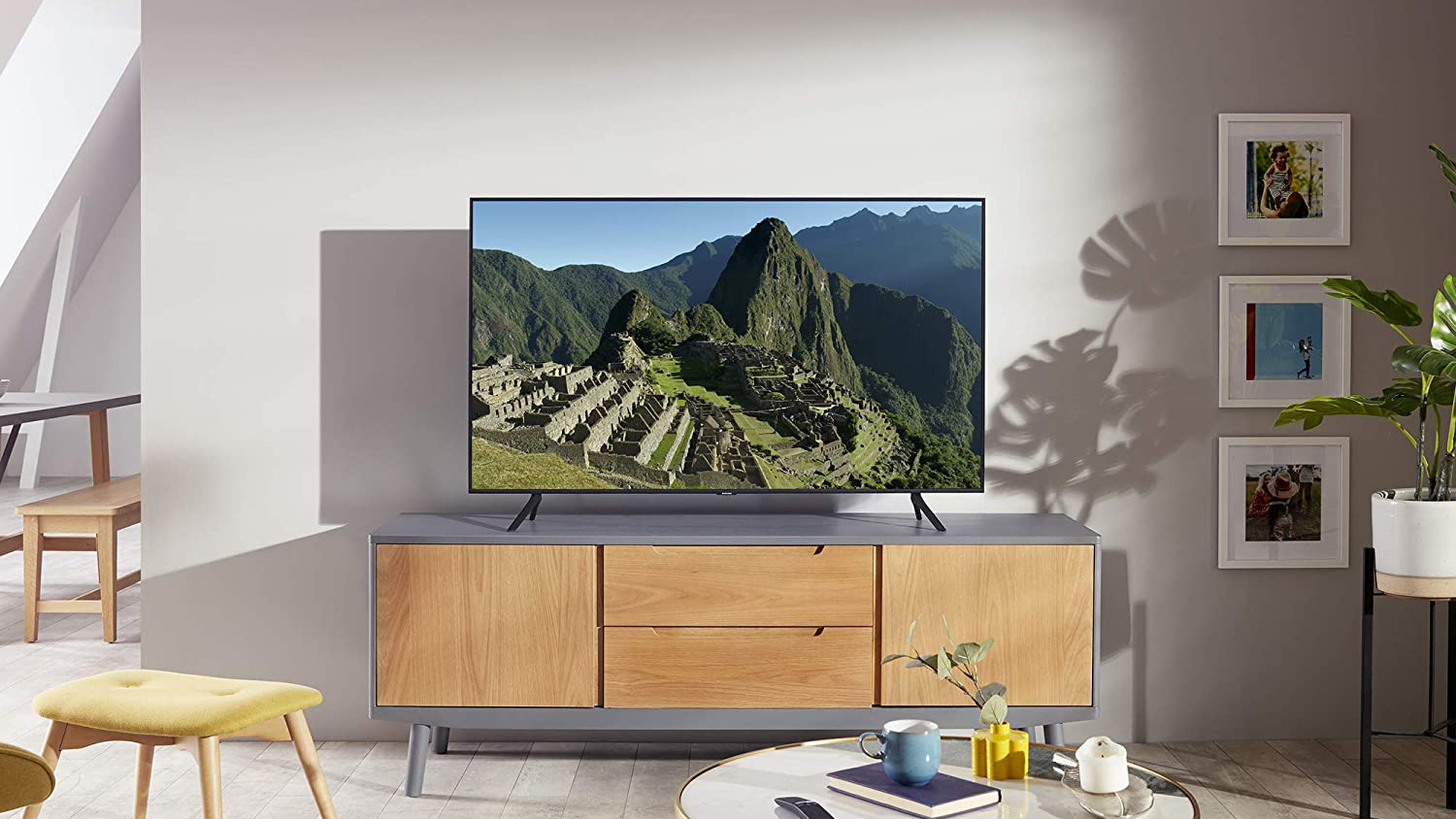Samsung Q60T/Q65T (QE55Q65T) review: this cheap 4K QLED TV is a budget winner
The Samsung Q60T/Q65T bring bold colour and excellent upscaling at a lower price


The Samsung Q60T/Q65T is a hugely satisfying performer in so many areas. You can get better 4K LED TVs, but you'll have to spend a lot more money
-
+
Great picture quality with 4K content
-
+
Impressive upscaling
-
+
Great operating system
-
+
Tidy, unobtrusive design
-
-
Rotten sound
-
-
Not the punchiest images around
-
-
Doesn't have all the latest gaming features
Why you can trust T3

Welcome to T3’s Samsung Q60T/Q65T review. This Samsung’s cheapest 4K QLED TV for 2020, but has quite a few features from higher up Samsung’s QLED pecking order – including the excellent Tizen-based Smart TV interface. The reason I've mentioned two models (the Q60T and the Q65T) here is that they're functionally identical, but with different stand colours. Different retailers will stock different models, but the important stuff is all the same.
It’s available in a very wide range of screen sizes, which is one reason why it will be a hugely popular TV, but I specifically tested the 55-inch version, known as the Samsung QE55Q65T.
Pick a slightly smaller version than this and the bill will be less than four figures, which is why it's among the best TV deals of 2020 – especially with Black Friday here. Between picture quality and functionality, it makes plenty of sense, and it’s also adept as a gaming TV, thanks to its impressively low lag (though there are some concerns here that we'll come to.
It’s not perfect – very few televisions are – but keep the price uppermost in your mind and you’ll understand why we’re such big fans. It's one of the best TVs under £1000, easily.
Samsung Q60T/Q65T review: price, release date and features
The model perched on our test bench is the 55-inch Samsung QE55Q65T, priced at £899/$699. If this screen size doesn’t quite fit your requirements, the Q65T is also available in 43-inch (£599/$429), 50-inch (£699/$649), 58-inch (£999/$799), 65-inch (£1,299/$999), 75-inch (£1,999/$1,599) and 85-inch (£2,299/$2,599) sizes – which means there really should be something there to suit you.
These are the prices you should expect to pay now, before further price drops – when the Q60T/Q65T first landed in the UK, the prices were significantly higher, but we've already seen a welcome rebalancing in the market, so this is what you should be looking for (or less).
No matter the screen size you decide on, your money buys you a TV of Samsung’s dependably flawless build quality and finish. The Q65T range illuminates its pixels using LEDs arranged around the edge of the screen (what's known as 'edge-lit') rather than having lights filling the entire space behind its panel (what's known as 'direct backlighting' – because, after all, the savings to deliver an ‘entry level’ range have to be made somewhere.
Get all the latest news, reviews, deals and buying guides on gorgeous tech, home and active products from the T3 experts
A new 'dual LED' tech is used here for the backlight – basically, two different LED colours, giving a more even and accurate light overall, helping to get those QLED colours just right.
As is usual with Samsung, every HDR standard except Dolby Vision is catered for – so you get HDR10 (the basic standard), HLG (for live broadcast) and HDR10+ (used on Amazon Prime Video and some Blu-rays).
It features three HDMI inputs (one eARC-compatible), a couple of USB, aerial posts for terrestrial and satellite tuners, composite video inputs and a digital optical output. There’s also Bluetooth 4.2 on board, along with dual-band Wi-Fi.
As well as the edge-lighting, the Samsung gives its position in the pecking order away somewhat with its audio specification. Unlike more expensive Samsung QLEDs, which feature multiple positions of speaker drivers and some sonic tracking of on-screen motion, the Q65T sticks with two audio channels and a total of 20 watts of power. At least there’s plenty of space between its feet to position one of the best soundbars.

Samsung Q60T/Q65T review: picture performance
Despite going without the anti-reflection technology of its more expensive Samsung TV siblings, I felt the Q60T/Q65T is a lustrous, detailed and fully engrossing watch, even when I was using it in reasonably bright sunlight.
Despite its edge-lit arrangement theoretically being much weaker than the direct model, it generates deep, detailed and nicely differentiated black tones, only succumbing to crushing them if the majority of the screen is concerned with describing darkness. It's much like the also-impressive Panasonic HX800 in this regard.
And despite the inherent limitations of this edge-lit configuration, the Samsung controls its backlighting well, with haloing or light-bleed only making an overt appearance during, say, white text on a black background. The top-and-bottom black bars of some 21:9 content will betray some very mild clouding, too.
White tones are reasonably bright, very acceptably detailed and strongly resist bleaching even when the on-screen action is mostly white-on-white. As a consequence, the QE55Q65T does good work with contrasts, even of the most glaring kind. I fired up a black-and-white movie for some retro thrills and the Samsung remained composed and entirely in control of the stark photography.
As far as actual colours go, the Samsung’ palette is wide-ranging and convincing. I had to delve into the harder-to-reach corners of the set-up menus to get that balance between ‘natural’ and ‘vivid’ just so, but once the correct level of vibrancy is achieved the Q60T/Q65T is a believable and well-balanced watch. A colour gamut coverage of around 92% is not to be sniffed at in a screen as affordable as this one – it’s a big QLED plus-point.
I thought detail levels, especially the essentials of skin-tone and -texture, are high. Patterns are described in depth, edges are drawn smoothly, and motion-handling is assured in all but the most trying circumstances.
There’s certainly not the out-and-out punch to pictures that some brighter (and more expensive) Samsung QLEDs can muster – peak brightness (in a 10% white window) of around 470 nits is respectable, although the equally affordable Philips OLED754 will go both brighter and darker than the Q60TQ55T can manage, thanks to inherent advantages of OLED.
• OLED vs QLED: the technologies explained
As an upscaler, the Q60T/Q65T proved equally adept. A 1080p Blu-ray disc enjoys many of the same positives as native 4K content: impressive contrasts, a nicely nuanced colour palette, and secure motion. I found some of the finest details are overlooked somewhat, and any wide shots of open sky or wide prairie (for example) did host a touch of picture noise, but the Samsung’s overall stability is praiseworthy.
Stepping down in the quality of source input inevitably results in a step-down in picture quality – although unlike some other affordable 4K TVs, the Q60T/Q65T doesn’t just throw in the towel the moment it’s confronted with a DVD or a standard-def TV broadcast.
Pictures soften, of course, edges become less certain, and picture noise becomes uncomfortably common too, but nevertheless the Samsung managed to maintain a good colour balance and passable detail levels in my tests, even in darker scenes.
It’s also worth noting that despite a screen like the OLED754 having the better of this Samsung where black levels are concerned, the Philips can’t lay a glove on the Q60T/Q65T where gaming response time is concerned. At sub-10ms, the Samsung’s responses are razor-sharp in its gaming mode.
However, it is missing some cutting-edge gaming features supported on the PlayStation 5 and Xbox Series X: specifically, variable refresh rates and support for 120fps video at 4K. These both allow for much smoother gaming in titles that support them, and for this reason the Q60T/Q65T doesn't quite make it into our pick of the best gaming TVs.
The closest TV equivalent with support for all these is LG's B9 OLED TV, which isn't as good for processing, but is an excellent TV in its own right. However, if you won't upgrade to the new consoles any time soon, the Q60T/Q65T is an excellent choice.

Samsung Q60T/Q65T review: sound quality
Having more recently become quite used to TVs that don’t sound as flat-out appalling as the flatscreen-TV cliche suggests, I was actually quite startled to hear a television that sounds just as poor as I remember.
Some TVs can parlay two drivers and 20 watts of power into a relatively inoffensive sound, but not the Q60T/Q65T. In my tests, it sounded feeble, basically: weedy, underpowered, vague and hard. Find even £99 in your budget for a dedicated soundbar and you’ll improve on the sound of the Q60T/Q65T to a frankly indecent degree; find enough for the likes of the Sonos Beam and you'll have something to really match the image quality.

Samsung Q60T/Q65T review: design & usability
At a touch over 5.7cm deep, the Q60T/Q65T is a reasonably discreet wall-hanging proposition. If like me you have a TV cabinet then it has a pair of the simplest push-and-click plastic boomerang-shaped feet at either end of its chassis (leaving plenty of space for that soundbar you’ll soon find so essential). And the top, left- and right-hand sides of its bezel are slim and unobtrusive. The whole thing is screwed together with Samsung’s usual solid efficiency.
Control is simple via either of the two bundled remote controls (one a virtually illegible handset featuring every possible button, one a much more usable and streamlined alternative), the half-decent SmartThings app, or via voice. Google Assistant and Amazon Alexa are both available.
The Tizen-derived smart TV interface and user interface that’s deployed to such good effect on every Samsung QLED (up to and including the super-expensive, uber-specified Samsung Q950TS 8K behemoth), and it goes a long way towards making the QE55Q65T seem more expensive than it is. Logical, legible and easy to navigate, it’s an object lesson in coherent design. And it is home to every essential catch-up and streaming service, as well as quite a few non-essentials too. Very few TVs from alternative brands can match it.

Samsung Q60T/Q65T review: verdict
It may not be the most glamorous TV you can buy for this sort of money, at least not in the way it looks as an object, but the Q60T/Q65T has it where it counts. I thought it looks great with 4K content, and it does gallant work upscaling lower-resolution video too.
It’s was a pleasure to use – certainly more of a pleasure than it is to listen to – and it gives every impression of being made to survive the long haul. It’s great value for money.
Its main competitor is the Philips OLED754, which is our pick as the best TV in the same kind of price range, thanks to the glorious contrast its OLED screen provides. However, its processing isn't quite as good, so for sports (and definitely for gaming), the Samsung may be a better pick. The Philips also only comes in 55-inch and 65-inch models, so size may be a big factor too.
The Panasonic HX800 is its closest LED TV competitor, and that offers a more cinematic image (it's what Panasonic is known for), and equivalently good gaming performance. The Samsung's smart TV system is better and easier to use, which may be an important factor.
All of our tests are done in a real-world environment – not in a lab. You can find out more about how we test at T3 here.
Simon Lucas is a freelance technology journalist and consultant, with particular emphasis on the audio/video aspects of home entertainment. Before embracing the carefree life of the freelancer, he was editor of What Hi-Fi? magazine and website – since then, he's written for titles such as Wired, Metro, the Guardian and Stuff, among many others. Should he find himself with a spare moment, Simon likes nothing more than publishing and then quickly deleting tweets about the state of the nation (in general), the state of Aston Villa (in particular) and the state of his partner's cat.
